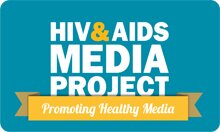What is AIDS?
AIDS is an acronym for Acquired Immune Deficiency Syndrome
AIDS is the final stage of HIV infection and is usually characterised by a CD4 count of less than 200.
Because HIV is responsible for attacking the immune system cells, AIDS develops when the body can no longer fight off infections or disease. At this point when the immune system has been sufficiently damaged, opportunistic infection is said to take advantage of a weakened immune system.Opportunistic infections rarely occur in healthy people but because the immune system is severely compromised in HIV positive persons and the body is unable to fight back effectively, these infections can be fatal. Therefore, AIDS can be noted as not just a specific illness but rather a collection of illnesses that affect the body and to which the weakened immune system struggles to respond.
According to the UNAIDS AIDS Epidemic Update of 2009, there have been a total of 2.0 million AIDS related deaths in 2008 alone. A total of 1.7 million adults and 280 000 children comprise this total.
Reporting tip: Using HIV/AIDS terms sensitively
Not all people who are HIV-positive necessarily have AIDS. Technically, only those with CD4 counts under 200 have AIDS.
According to conventional science, people cannot have AIDS without being HIV-positive first. The following statement would be insensitive and possibly incorrect: "Newly crowned Miss HIV Stigma-Free, Kgalalelo Ntsepe, has AIDS."
More sensitive: "Newly crowned Miss HIV Stigma-Free, Kgalalelo Ntsepe, is openly HIV-positive." Of course, naming people who are HIV-positive is in itself ethically complicated. See the ethics section for a more detailed discussion of this.






